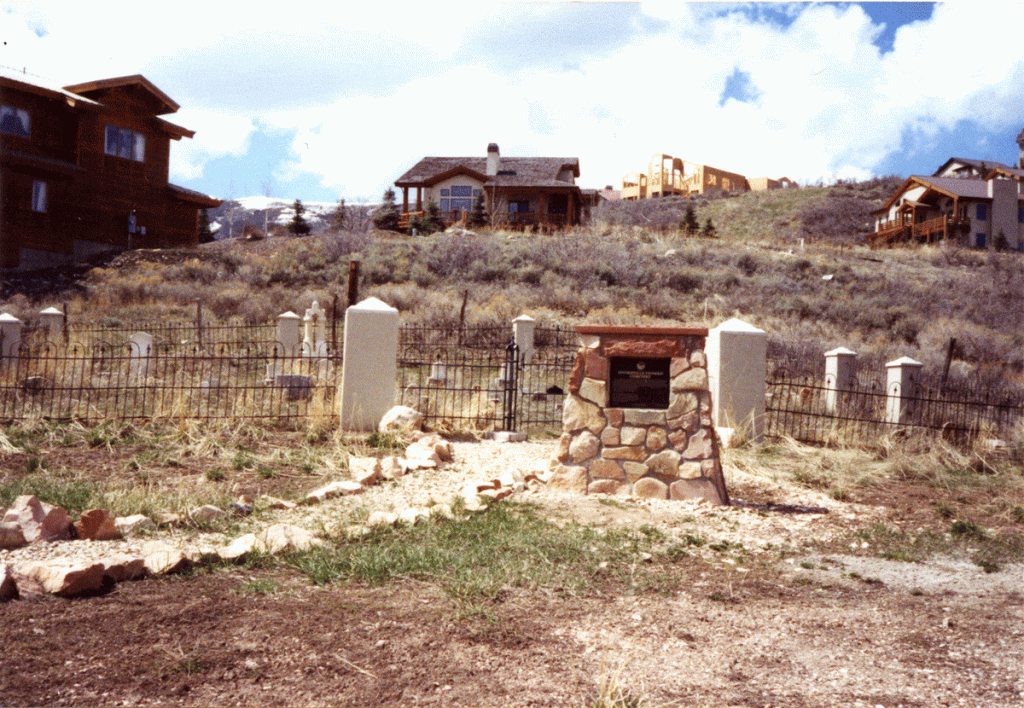In recent years, there has been support for and debate about creating a Snyderville Basin Cemetery, where Basin residents can be laid to rest. Currently, there are no options for them. Both the Park City Cemetery, first used in 1879 but formally dating to 1892, and the Glenwood Cemetery, established in 1885, are still open but have restrictions on who can be interred there.
What many people are not aware of is that there already is a Snyderville Cemetery. It is a prime piece of real estate, guarded by stone pillars and an ornate iron fence, located on Roffe Road in the Sun Peak community, overlooking the Basin and faraway summits of the Uintas. Unfortunately, it is historical and has not been used for any new burials since the early 20th century.

Credit: Park City Historical Society and Museum, Hal Compton Collection
The Snyder family of Snyderville arrived in 1849. In 1850, Samuel Snyder purchased Parley Pratt’s claim to Parley’s Park and the extended Snyder family started settling the area in earnest. Soon they were involved in farming, livestock, and lumber, the latter produced in their grist and saw mill, aptly named Snyder’s Mill and powered by water from the White Pine, Red Pine, and Willow creeks. Lumber from this mill was used in the construction of local homes, buildings, mining structures and tunnels, and even the Tabernacle in Salt Lake.
Inevitably, with a growing population and the high mortality rate of the 19th century, death would touch this community. One of the earliest losses in the Snyder family occurred in October 1874, when six-month-old Robert W. Snyder, Samuel’s grandson, passed away. Chester Snyder, Samuel’s brother, set aside an east-facing hillside on his property for Robert’s burial site. Eventually, Chester and 29 others in his and Samuel’s families were placed here. (Samuel Snyder, who died in 1866, was buried in Salt Lake City Cemetery.) Reflecting the vulnerability of the young then, nearly half of those in the cemetery are infants or small children. Also, there is evidence suggesting that several of the women died as a result of childbirth, which was very common in that age. The final known interment was of Sextus Snyder, who died just shy of 16-years-old, in October 1920.
Since that time, Park City and the Snyderille Basin have experienced growth and development that have erased much of the historic character of the area. A small reminder is the “Snyderville Pioneer Cemetery,” surrounded by homes built during the 1990s but still preserved as a place of reflection and appreciation for the hardships faced long ago. Thanks are owed to the foresight of those who left intact this important piece of local and Snyder family history. Perhaps most important in this effort was Bea Kummer, who moved to Park City around 1930 and was a passionate historian and preservationist; she strove for more than a decade to have the cemetery dedicated and registered with Utah state historical offices, which happened in the late 1990s.
Sources:
http://www.orsonprattbrown.com/Daniel-CJB-bro/snyderville-cem-DUP2001.html
http://www.deseretnews.com/article/600138847/Old-cemetery-stands-guard-in-Park-City.html?pg=all